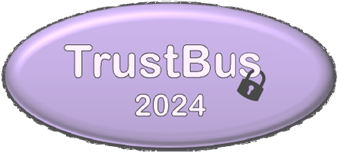Aida Akbarzadeh
|
Norwegian University of Science and Technology, Norway
Ahmed Walid Amro
|
Norwegian University of Science and Technology, Norway
Reinhardt Botha
|
Nelson Mandela University, South Africa
Vasiliki Diamantopoulou
|
University of the Aegean, Greece
Simone Fischer-Hübner
|
Karlstad University, Sweden
Steven Furnell
|
University of Nottingham, UK
Dimitris Geneiatakis
|
European Commission, Belgium
Vasileios Gkioulos
|
Norwegian University of Science and Technology, Norway
Stefanos Gritzalis
|
University of Piraeus, Greece
Christos Kalloniatis
|
University of the Aegean, Greece
Georgios Kambourakis
|
University of the Aegean, Greece
Maria Karyda
|
University of the Aegean, Greece
Vasilios Katos
|
Bournemouth University, UK
Georgios Kavallieratos
|
Norwegian University of Science and Technology, Norway
Spyros Kokolakis
|
University of the Aegean, Greece
Costas Lamprinoudakis
|
University of Piraeus, Greece
Javier Lopez
|
University of Malaga, Spain
Haris Mouratidis
|
University of Essex, UK
Martin Olivier
|
University of Pretoria, South Africa
Nikolaos Pitropakis
|
Edinburgh Napier University, UK
Panagiotis Rizomiliotis
|
Harokopio University, Greece
Georgios Spathoulas
|
University of Thessaly, Greece
Aggeliki Tsohou
|
Ionian University, Greece
Adéle da Veiga
|
University of South Africa, South Africa
Christos Xenakis
|
University of Piraeus, Greece
Günther Pernul
|
University of Regensburg, Germany






